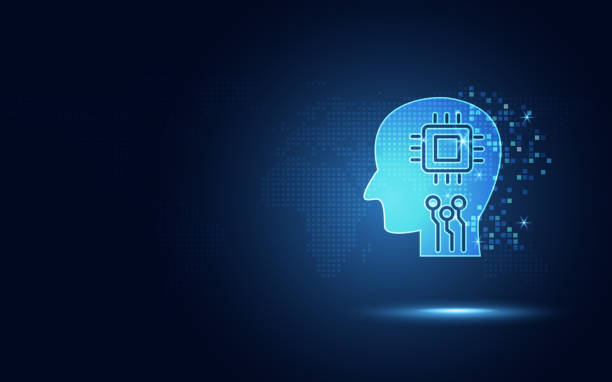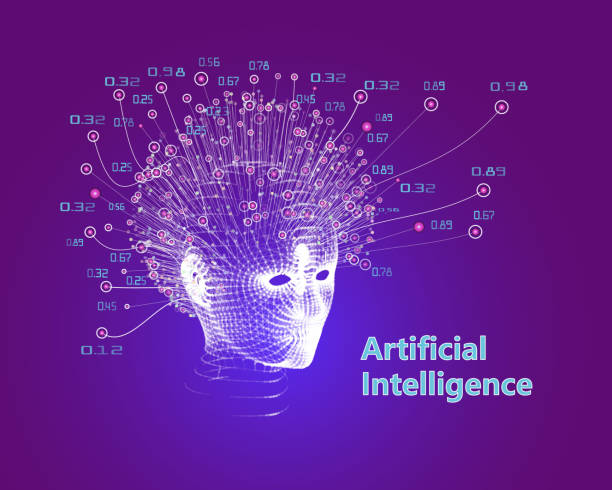What is an AI Robot and How Does it Work?

An #Artificial Intelligence Robot (AI Robot) is a combination of two key technologies: #Artificial Intelligence and robotics.
In essence, these robots are machines that use AI algorithms to perform tasks that typically require human intelligence.
These tasks include learning, reasoning, problem-solving, perception, and decision-making.
AI robots can be deployed in various environments, from factories and warehouses to hospitals and even homes.
AI robots work by first collecting data through sensors.
This data can include images, sounds, texts, and other information.
Then, the data is transferred to an AI system, which analyzes and interprets the data using machine learning algorithms and other AI techniques.
Based on this analysis, the robot makes decisions and takes necessary actions.
For example, an AI robot in a factory can identify defective products by examining product images and remove them from the production line.
An AI robot is, in fact, a complex system that requires precise coordination between hardware (the robot’s body and sensors) and software (AI algorithms).
Recent advancements in both fields have made AI robots increasingly powerful and efficient.
Artificial intelligence allows robots to interact with their environment and perform complex tasks.
Are you tired of your company’s website failing to meet your expectations? With Rasawweb, design a professional website that truly represents your business.
✅ Increase attraction of new customers and sales leads
✅ Boost your brand’s credibility and trust among your audience
⚡ Get a free website design consultation!
Main Components of a Smart Robot
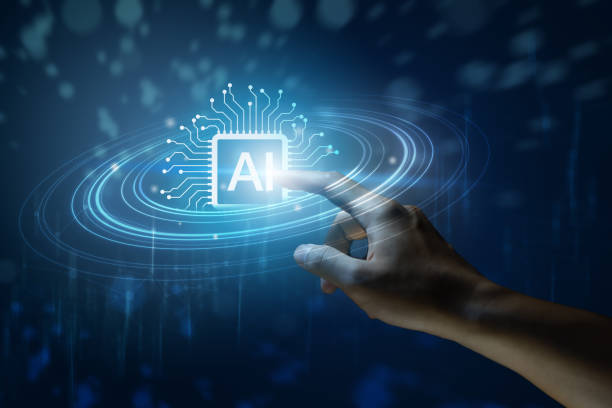
A smart robot is composed of several main components, each playing a crucial role in the robot’s overall functionality:
- Sensors Sensors are tools that collect information about the robot’s surrounding environment.
This information can include temperature, light, sound, pressure, distance, and images.
Sensors help the robot become aware of its environment and make appropriate decisions. - Processor The processor is the robot’s brain and is responsible for analyzing data collected by sensors and making decisions.
The processor is usually a computer or microcontroller that processes data using AI algorithms. - Motors and Actuators Motors and actuators are components that enable the robot to move and perform physical tasks.
These components can include electric motors, hydraulic motors, pumps, and cylinders. - Power Source The power source provides the necessary energy for the robot’s operation.
This source can include batteries, solar cells, or an external power supply. - Software Software includes AI algorithms, control programs, and other applications that govern the robot’s functionality.
Software enables the robot to learn, reason, make decisions, and interact with its environment.
An AI robot has no functionality without software.
The combination of these components allows a smart robot to perform various tasks automatically and with high precision.
Diverse Applications of AI Robots

AI robots have numerous applications in various industries and fields.
Here are some of their most important applications:
- Manufacturing Industry AI robots are used in production lines to perform repetitive, dangerous, and precise tasks.
They can help improve product quality, increase productivity, and reduce costs. - Healthcare AI robots are used in hospitals and treatment centers for tasks such as surgery, nursing, rehabilitation, and medication delivery.
They can help doctors and nurses provide better care to patients. - Customer Service AI robots are used as chatbots and virtual assistants to provide customer service.
They can answer customer questions, solve their problems, and provide them with the necessary information. - Security AI robots are used in security systems to monitor environments, identify threats, and respond to incidents.
They can help increase security and reduce crime. - Agriculture AI robots are used in agriculture for tasks such as planting, harvesting, spraying, and irrigation.
They can help increase productivity, reduce water and fertilizer consumption, and produce high-quality crops.
With technological advancements, the applications of AI robots are expected to expand further in the future and play a more significant role in our lives.
AI robots are changing the world.
| Application | Description |
|---|---|
| Manufacturing | Performing repetitive and dangerous tasks |
| Healthcare | Surgery, nursing, rehabilitation |
| Customer Service | Answering questions, solving problems |
Challenges and Limitations of Smart Robots

Despite significant advancements in robotics and artificial intelligence, smart robots still face challenges and limitations:
- High Cost The design, construction, and maintenance of smart robots are usually expensive.
This high cost can be a barrier to the widespread use of these robots in some industries and fields. - Complexity Smart robots are complex systems that require high technical expertise and knowledge for design, development, and maintenance.
- Security Smart robots can be vulnerable to cyberattacks.
Hackers can take control of robots and use them for malicious purposes. - Ethics The use of smart robots in some fields, such as military and security, can raise ethical issues.
- Employment Some people are concerned that the widespread use of smart robots will lead to job losses.
To overcome these challenges and limitations, further research and development in robotics and artificial intelligence are needed.
Additionally, we must pay attention to the ethical and social issues associated with the use of these technologies.
AI robots should benefit humanity.
Are you frustrated with the low conversion rate of your online store?
Rasawweb, with professional e-commerce website design, is your definitive solution!
✅ Increase your sales and revenue
✅ Provide an unparalleled user experience for your customers
⚡ Get a free consultation now!
The Future of Robotics and Artificial Intelligence

The future of robotics and artificial intelligence is very bright and promising.
With technological advancements, smart robots are expected to become more powerful, intelligent, and efficient.
They can play a more significant role in various aspects of our lives, including:
- Greater Automation Smart robots can automate many repetitive, dangerous, and difficult tasks.
This can lead to increased productivity, reduced costs, and an improved quality of life. - Better Human Interaction Smart robots can interact with humans more naturally and effectively.
They can be used as personal assistants, collaborators, and companions. - Solving Complex Problems Smart robots can be used to solve complex problems in various fields such as medicine, environment, and economics.
- Space Exploration Smart robots can be used for space exploration and exploring other planets.
They can collect valuable information and help us better understand the universe.
However, to achieve this bright future, we must pay attention to existing challenges and limitations and strive to overcome them.
AI should be developed in a way that benefits everyone.
Machine Learning and Its Role in Smart Robots
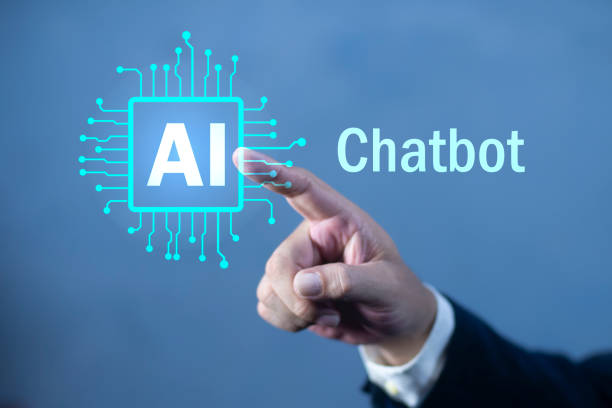
Machine learning is one of the most important branches of artificial intelligence that plays a key role in the performance of smart robots.
Machine learning enables robots to learn from data and improve their performance without explicit programming.
Machine learning algorithms can analyze data, identify patterns, and improve their predictions and decision-making based on these patterns.
In smart robots, machine learning is used for various tasks, including:
- Pattern Recognition Robots can use machine learning to recognize patterns in data.
For example, a robot can identify different objects by examining images. - Decision-Making Robots can make better decisions using machine learning.
For example, a robot can choose the best path for movement by assessing environmental conditions. - Control Robots can control their movements using machine learning.
For example, a robot can learn complex movements such as walking and running through practice.
With the advancement of machine learning algorithms, smart robots will be able to perform more complex tasks and play a more significant role in various aspects of our lives.
AI robots become more capable with machine learning.
How to Program a Smart Robot?
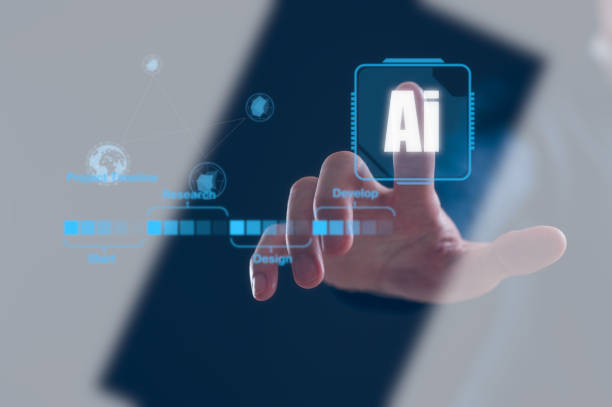
Programming a smart robot requires knowledge and skills in various fields such as robotics, artificial intelligence, and programming.
The programming process typically involves the following steps:
- Define the Goal First, you need to specify the robot’s objective.
What is the robot supposed to do? What tasks should it perform? - Hardware Selection Based on the robot’s goal, you must choose the appropriate hardware.
This includes selecting the robot’s body, sensors, motors, processor, and power supply. - Software Selection You need to choose the right software to control the robot.
This includes selecting the programming language, AI algorithms, and software libraries. - Programming You must write programs to control the robot.
These programs should instruct the robot on how to collect data, how to process it, how to make decisions, and how to take necessary actions. - Testing and Optimization After writing the programs, you need to test them and optimize the robot’s performance.
This includes debugging, adjusting parameters, and improving algorithms.
For programming smart robots, various programming languages such as Python, C++, and Java can be used.
Additionally, several software libraries like ROS (Robot Operating System) and TensorFlow are available to assist you in this process.
An AI robot operates correctly with proper programming.
| Step | Description |
|---|---|
| Define Goal | Specifying the robot’s objective |
| Hardware Selection | Choosing suitable components |
| Software Selection | Choosing the programming language |
Difference Between Traditional Robots and Smart Robots
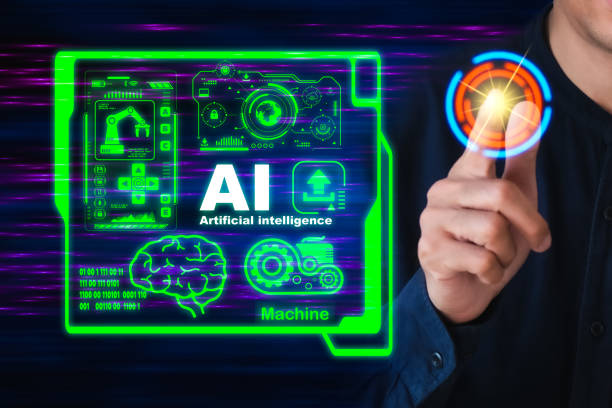
The main difference between traditional robots and smart robots lies in their ability to learn and adapt.
Traditional robots are typically pre-programmed and can only perform tasks for which they have been explicitly programmed.
They cannot learn, adapt to their environment, or make new decisions.
In contrast, smart robots, using artificial intelligence and machine learning, are capable of learning, adapting, and making decisions.
Here are some key differences between traditional robots and smart robots:
- Learning Traditional robots cannot learn, but smart robots can learn from data and improve their performance.
- Adaptation Traditional robots cannot adapt to their environment, but smart robots can adapt to their environment using sensors and AI algorithms.
- Decision-Making Traditional robots cannot make new decisions, but smart robots can make new decisions using AI algorithms.
These differences make smart robots more efficient and effective than traditional robots in various fields.
An AI robot is a new generation of robots.
Did you know that 94% of a first impression of a company is related to its website design?
Rasawweb, by offering professional corporate website design services, helps you create the best first impression.
✅ Create a professional and trustworthy image for your brand
✅ Easier attraction of potential customers and improved online standing
⚡ Get a free corporate website design consultation!
Case Study of a Successful AI Robot

One successful example of an AI robot is ‘Sophia’.
Sophia is a humanoid robot developed by Hanson Robotics.
Sophia is capable of communicating with humans, answering questions, expressing emotions, and learning.
This robot uses artificial intelligence, natural language processing, and machine learning to perform these tasks.
Sophia has been used in various fields such as customer service, education, and entertainment.
This robot also acts as an ambassador for promoting artificial intelligence and robotics.
Sophia’s success demonstrates that AI robots have high potential to improve our lives.
However, we must pay attention to the ethical and social issues associated with the use of these technologies and strive for their responsible development.
AI robot Sophia is an example of the future.
Important Tips for Choosing and Using a Smart Robot
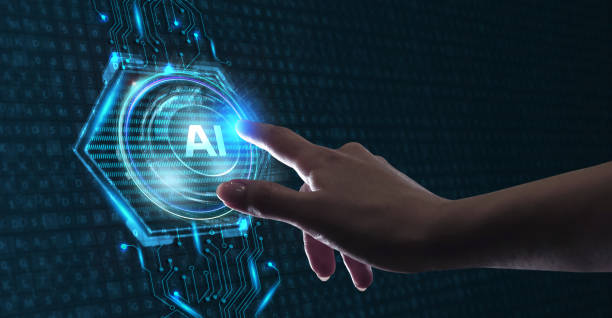
When choosing and using a smart robot, you should pay attention to the following points:
- Goal First, you need to define your purpose for using the robot.
What is the robot intended to do? - Hardware You must choose the appropriate hardware for your purpose.
This includes selecting the robot’s body, sensors, motors, processor, and power supply. - Software You need to choose the right software to control the robot.
This includes selecting the programming language, AI algorithms, and software libraries. - Security You must protect your robot’s security.
This includes using strong passwords, updating software, and protecting the robot from cyberattacks. - Ethics You must pay attention to the ethical issues of using robots.
Do not use the robot for tasks that might harm others or violate their rights.
By observing these points, you can use your smart robot safely and effectively and benefit from its advantages.
An AI robot must be chosen and used correctly.
Frequently Asked Questions
| Question | Answer |
|---|---|
| What is an AI robot? | An Artificial Intelligence Robot (AI Robot) is a machine capable of perceiving its environment, reasoning, learning, and making decisions to perform tasks autonomously. |
| What is the difference between ordinary robots and AI robots? | Ordinary robots perform repetitive tasks based on prior programming, while AI robots can learn from experience, interact dynamically with their environment, and even behave in ways that resemble human intelligence. |
| What are the main applications of AI robots? | They are used in industries (manufacturing, assembly), medicine (surgery, diagnosis), services (customer support, domestic), exploration (space, underwater), and many other fields. |
| What technologies are used in the construction of AI robots? | Machine Learning, Computer Vision, Natural Language Processing, Deep Learning, and Robotics are among the key technologies. |
| Can AI robots have emotions? | Currently, robots do not have emotions in the human sense. They can identify and react to emotions, but they do not experience them themselves. |
| What are the main challenges in developing AI robots? | Safety, reliability, ethics, autonomy, adaptability to complex environments, and natural human interaction are important challenges. |
| How are AI robots trained? | They are typically trained using large volumes of data, machine learning algorithms, and deep learning to identify patterns and make decisions. |
| Examples of AI robots in daily life? | Smart robotic vacuum cleaners, customer support chatbots, self-driving cars, and surgical robots in hospitals. |
| Are AI robots a threat to human jobs? | Some repetitive jobs may become automated, but at the same time, robots can increase productivity and create new jobs in the development, maintenance, and supervision of these systems. |
| How is the future of AI robots predicted? | They are expected to become smarter, more autonomous, and capable of performing more complex tasks, engaging in closer interaction with humans in various environments. |
And other services of Rasawweb Advertising Agency in the field of advertising
- Smart Custom Software: A blend of creativity and technology for digital branding through user experience customization.
- Smart Advertising Campaign: A professional solution for digital branding focused on intelligent data analysis.
- Smart Website Development: A creative platform for improving customer acquisition with intelligent data analysis.
- Smart Direct Marketing: A creative platform for improving customer acquisition through user experience customization.
- Smart Custom Software: Revolutionize digital branding with the help of dedicated programming.
And over hundreds of other services in internet advertising, advertising consultation, and organizational solutions.
Internet Advertising | Advertising Strategy | Advertorials
Sources
Smart Robots: World Changers in the FutureApplications of Artificial Intelligence and Robotics in IndustryOverview of Smart Robot Types and Their ApplicationsThe Future of Artificial Intelligence in Robotics
? For a leap forward in your business in the digital world, Rasawweb Afarin Digital Marketing Agency, specializing in responsive website design and providing comprehensive digital marketing solutions, is always by your side to help you reach the peak of success.
📍 Tehran, Mirdamad Street, next to Bank Markazi, Southern Kazeroon Alley, Ramin Alley, No. 6

